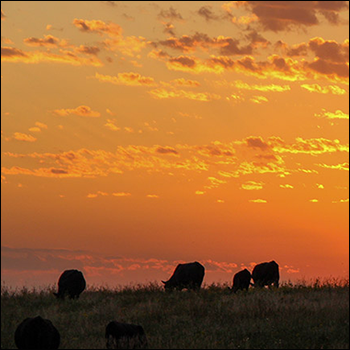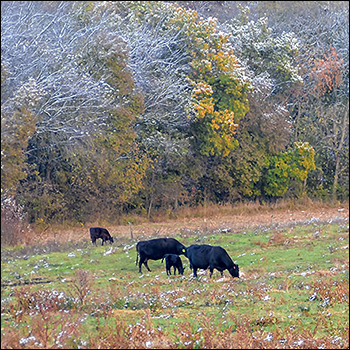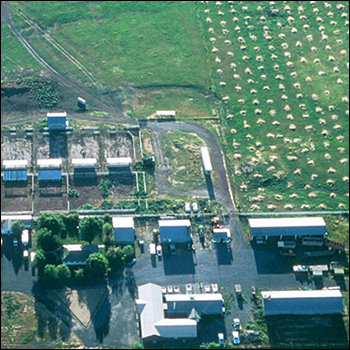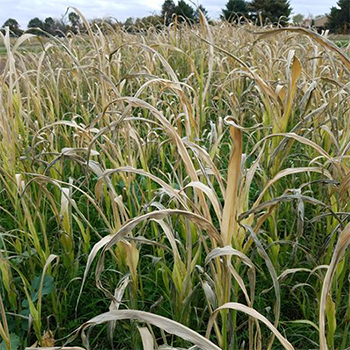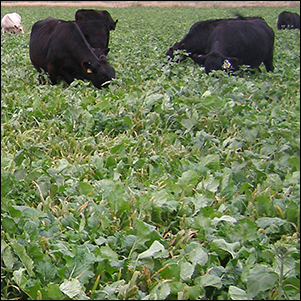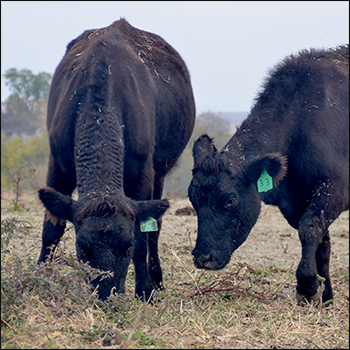Managing Forages Following Frost
Use these tips as a guide for managing forages and legumes after light or heavy frosts.
It won’t be long before the first frost will begin to shut down forages, and producers will need to change their feeding of these feedstuffs. Sorghum, sudangrass and sorghum-sudangrass hybrids will require extra management during frosty weather because of risks related to prussic-acid poisoning. Young leaves and tillers will have the highest levels of prussic acid.
Prussic-acid poisoning (also known as cyanide poisoning) occurs when enzymes in the plant convert a secondary compound into cyanide gas whenever the plant wilts. A number of conditions can cause wilting — frost, drought, cutting or chopping. Signs of poisoning can occur as soon as 10 minutes after the animal consumes a toxic dose. Cyanide interferes with the ability of blood to carry oxygen and causes death by suffocation. Symptoms of cyanide poisoning include excessive salivation, labored breathing, convulsions, paralysis, staggering and death.
 Prussic-acid concentration in sorghum that is partially killed by frost is unpredictable and grazing should be avoided. [Photo by Dean Baas] |
The time between the first light frost and killing frost is dangerous, but sorghum-family forages can be managed.
- After any frost, do not feed these forages as green chop.
- Do not graze the fields on nights when frost is expected.
- After a nonkilling frost, avoid grazing for two weeks.
- If there is a light frost and new growth appears on the plants, wait 10-14 days after a killing freeze before grazing.
- If there is a killing frost, avoid grazing until the plants are completely dead and dry (usually five to seven days).
- Frosted forages are usually safe to harvest as hay and can be fed after three weeks of curing.
- Wait five to seven days after a frost before chopping as silage and allow six to eight weeks of ensiling before feeding.
- If you are concerned about prussic acid, test the forage.
What about grazing legumes after a hard frost?
The risk of bloat from grazing legumes (alfalfa and clovers) is greatest when pastures are grazed one to two days after a hard frost and especially if it is a pure legume stand. Wait a few days before you resume grazing. Make sure the animals have eaten some dry hay before returning them to these pastures. Providing poloxalene as a block or mixing it with concentrates helps control bloat if the animals eat a uniform amount daily.
Editor’s note: Beth Doran is an Iowa State University extension beef specialist.
